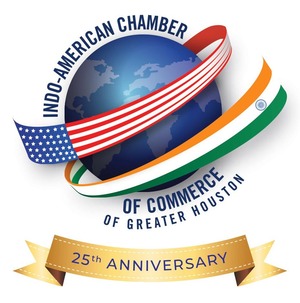By Dave Kearns
One of the great stories about the U.S. is the large number of young people who come here to go to college, then stick around to make their careers. Many, once they’ve succeeded, also spend a good deal of their time helping others do the same thing.
I spoke to two very different people this week, one from India and the other from Indonesia. Both came to this country to go to school, and both stuck around afterwards. Oddly enough, both now live in Texas. One, though, represents what we could refer to as the “old line” of identity
management companies while the other – a good bit younger – represents the new wave, the open source movement that seem to captivate so many of our young technologists.
Jim Yang was born in Jakarta, Indonesia into an ethnic Chinese family. He grew up knowing what “minority status” was all about. So journeying to Austin to attend the University of Texas wasn’t a
really big leap or adjustment (except, of course, for the huge amount of empty space that comprises much of Texas). After school, Yang stayed on as a technology consultant and landed a gig designing software for the HEB grocery chain.
What he also soon discovered, as we all know, is that identity information is stored in silos. But Yang is bright, and soon realized that a virtual directory was what he needed. Based on current prices for the size and scope of the HEB implementation, though, Yang realized that it would be an extremely hard sell to the chain’s upper management. So he rolled his own. That’s right, he up and created a virtual directory on his own. He enjoyed the process so much that he went on to found the Penrose project, an open source virtual directory system <http://penrose.safehaus.org/>.
He got together with a few others and started safehaus.org as an open source hosting site, but with a few twists (read the FAQ, it’s fascinating). Penrose could be very useful to those of you needing to work up a provisioning, federation, single sign-on or other identity project without any money in your budget. But it could also be interesting to those with money to burn. Take a look.
The second fellow I spoke to has been in the U.S. for more than 20 years. Somesh Singh took his Bachelor’s degree back home in India at Banaras Hindu University, then hoped over to Columbia University to acquire a Master’s and later picked up an MBA at Wharton. Those are impressive credentials. Add in 11 years at IBM then tack on 7 or 8 years at BMC (where he’s now vice president and general manager of the Identity Management Business Unit) and you’ll know why I consider him the embodiment of “old line” technology. But that doesn’t mean stodgy.
I was taking to Singh about the release – just this week – of BMC’s Identity Management Suite, version 5.0. This is phase 2 in a three-phase rollout (which I first discussed in July
<http://www.networkworld.com/nldsv7921> ) and includes all the key technologies BMC acquired when it purchased OpenNetwork
<http://www.networkworld.com/news/2005/0323bmcbuys.html?rl> and Calendra
<http://www.networkworld.com/news/2005/0110bmctobu.html?rl>.
It also includes other software developed initially at BMC. The five areas covered by the suite are:
* Directory management and visualization.
* Access management.
* Password management.
* User administration and provisioning.
* Audit and compliance management.
This is a major release of a state-of-the-art suite of identity tools from the company that best understands the “management” part of identity management – BMC has been doing systems management for longer than there’s been an identity management practice. BMC is a force
to be reckoned with.
Singh is also very active with the Indo-American Chamber of Commerce of Greater Houston, of which he is president. One of its stated aims <https://www.iaccgh.com/about.htm> is: “To encourage and mentor our youth and encouraging a spirit of entrepreneurship through mentor programs, internships, and networking.”
Giving back to the community is important for all of us. Singh is doing that. Yang is, also, in a different way by hosting open source projects. Their products are worth taking a look at.
Their activities are worth emulating.
The top 5: Today’s most-read stories
1. Nortel faces uphill battle
<http://www.networkworld.com/nldsv8164>
2. How to solve Windows system crashes in minutes
<http://www.networkworld.com/nldsv7594>
3. Cisco pushes new security software
<http://www.networkworld.com/nldsv8165>
4. Tech Update: High-speed TCP eases WAN congestion
<http://www.networkworld.com/nldsv8166>
5. Somebody’s got to pick up the ‘Net’s tab
<http://www.networkworld.com/nldsv8167>
_______________________________________________________________
To contact: Dave Kearns
Dave Kearns is a writer and consultant in Silicon Valley. He’s written a
number of books including the (sadly) now out of print “Peter Norton’s
Complete Guide to Networks.” His musings can be found at Virtual Quill
<http://www.vquill.com/>.
Kearns is the author of three Network World Newsletters: Windows
Networking Tips, Novell NetWare Tips, and Identity Management.
Comments about these newsletters should be sent to him at these
respective addresses: <mailto:windows@vquill.com>,
<mailto:netware@vquill.com>, <mailto:identity@vquill.com>.
Kearns provides content services to network vendors: books, manuals,
white papers, lectures and seminars, marketing, technical marketing and
support documents. Virtual Quill provides “words to sell by…” Find out
more by e-mail at <mailto:info@vquill.com>
_______________________________________________________________
This newsletter is sponsored by Sybase
